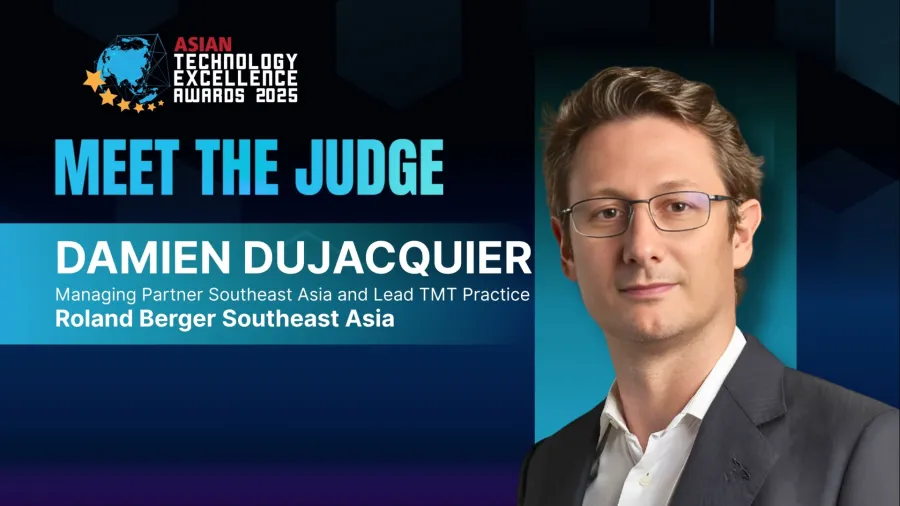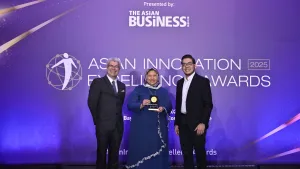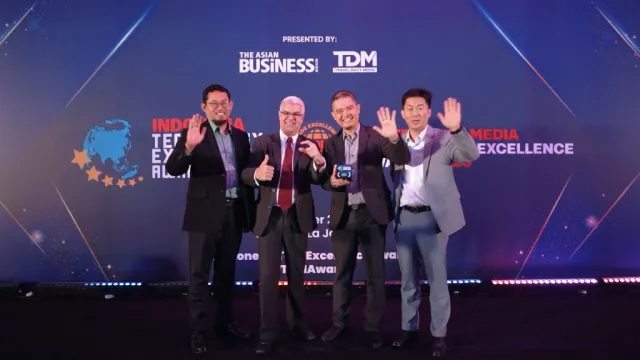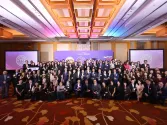
Ecosystem partnerships are the key driver of scale – Roland Berger Southeast Asia’s Managing Partner Damien Dujacquier
He explained how AI, cloud, and cross-industry partnerships are reshaping the region’s digital future.
Asia’s digital economy is rapidly advancing as infrastructure, innovation, and sustainability create new opportunities. With AI-driven data centres, sovereign cloud platforms and next-generation connectivity, the region holds vast potential whilst confronting the challenge of scaling across diverse markets.
Damien Dujacquier, Managing Partner and Lead TMT Practice at Roland Berger Southeast Asia, shared his extensive expertise. Based in Singapore, he has been with the firm since 2000, with a strong focus on telecommunications, media, high technology and infrastructure. His role spans corporate strategy, marketing and sales, digitalisation, and performance improvement.
As a judge at the Asian Technology Excellence Awards 2025, Dujacquier highlights how AI, cloud, connectivity and sustainability will shape Asia’s digital future.
Given your work with High Tech and Infrastructure clients, what are some of the most promising innovation trends you see gaining momentum in Asia's tech ecosystem?
The most exciting trends are those that converge infrastructure readiness with cutting-edge technologies. We are seeing rapid deployment of AI-optimised data centres, with liquid cooling, 200kW racks, and sovereign AI cloud platforms now being delivered at national or regional scale. In parallel, direct-to-device satellite connectivity is moving from concept to commercial reality, enabling seamless communication for millions of users even in remote regions. Another defining trend is green infrastructure, renewable-powered campuses and cross-border clean energy sourcing that are reshaping sustainability benchmarks. These innovations are not just incremental; they are redefining Asia’s ability to scale AI, cloud, and connectivity as utilities for the digital economy.
What are the key challenges companies in Asia face when trying to scale innovation across diverse and changing markets?
Scaling innovation in Asia requires navigating a patchwork of regulatory environments that vary significantly across markets. Infrastructure bottlenecks are also a constraint, whether it is power availability for data centres, subsea cable routes, or spectrum allocation for satellite services. Whilst the region produces a vast pool of STEM graduates, the shortage of high-end skills in AI, quantum, and advanced connectivity remains another challenge. In addition, adoption patterns also differ, with some markets embracing cloud-native and AI-first solutions, whilst others still rely on legacy systems. Companies must also address sustainability pressures, balancing growth with environmental efficiency. The challenge is to design models that scale across borders whilst remaining adaptable to local realities.
How can companies better align their digital strategies with regional infrastructure readiness and local market dynamics?
Alignment starts with modular digital platforms that can flex to different infrastructure conditions. What works in Singapore cannot simply be transplanted into Indonesia or Laos. Successful players combine terrestrial networks with satellite backhaul to bridge rural gaps, ensuring a consistent user experience. Partnerships with regulators, such as Singapore’s work on tropical data centre standards, show the value of engaging early on policy and infrastructure design. Companies also need to localise energy strategies, importing renewables, optimising cooling, and tailoring efficiency solutions to local climates. To succeed, a phased rollout, prioritisation of higher-readiness markets whilst building capacity in emerging ones, ensures higher impact. The balance of global scale and local fit is a key success factor.
What strategies can companies adopt to scale digital solutions effectively across the region to maintain a competitive edge?
Ecosystem partnerships are the single most powerful lever for scale. Data centre operators are demonstrating this by forming joint ventures with hyperscalers, telcos, and governments, whilst satellite players are partnering with smartphone and automotive OEMs to create ready-to-use ecosystems. Technologically, designing on cloud-native architectures, open APIs, and carrier-neutral platforms ensures adaptability and faster go-to-market. Continuous investment in talent is equally critical, as scaling requires local expertise as much as technical infrastructure.
Looking ahead, what major technological shifts do you believe will redefine the region’s digital economy, and how should companies start preparing today?
Several shifts stand out. AI as a utility will become mainstream, supported by sovereign AI cloud platforms and data centres optimised for liquid-cooled, high-density workloads. Direct-to-device satellite connectivity will expand digital inclusion, integrating seamlessly with terrestrial 4G/5G networks. The convergence of AI, cloud, and satellite will redefine resilience, enabling edge intelligence powered by sovereign infrastructure. Quantum computing and advanced renewables will also gradually reshape industries from finance to energy. Companies must prepare by investing in hybrid infrastructures, fostering partnerships with device makers and hyperscalers, and embedding sustainability as a design principle.
As a judge for the Asian Technology Excellence Awards 2025, what criteria will you be prioritising when evaluating the nominees’ technological achievements?
My focus will be on impact, originality, and scalability, but also on measurable business outcomes. Innovation must translate into clear customer or societal value, whether through revenue growth, latency reduction, or expanded inclusion. I will prioritise solutions that demonstrate sovereign resilience, such as national-scale AI platforms or independent connectivity solutions that reduce reliance on foreign providers. Sustainability will also weigh heavily, particularly innovations that lower energy use or carbon impact. Ultimately, I will value those who combine bold vision with execution discipline and demonstrable ROI.



















 Advertise
Advertise









